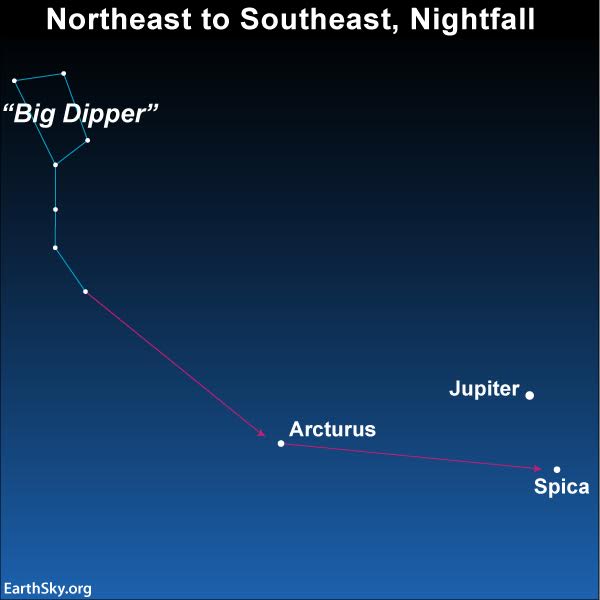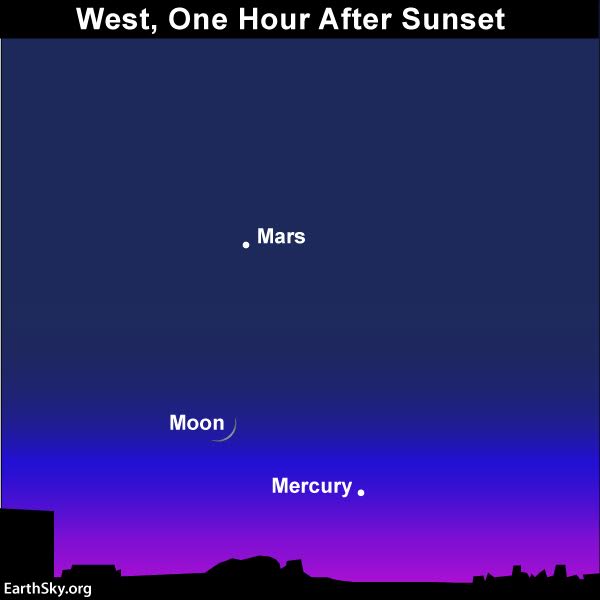Tonight – March 29, 2017 – use the waxing crescent moon to find the planets Mercury and Mars. The slender lunar crescent beautifies your western sky first thing at dusk. You might even see the moon’s dark side illuminated in earthshine – sunlight that’s reflected from Earth and back to the nighttime side of the moon.
As dusk deepens into darkness, look for Mercury and Mars to pop out in the vicinity of the March 29 moon. The sky charts in our posts are usually designed for North America, but they work globally, too. Just know that the placement of the moon, Mercury and Mars will vary, depending on where you are on Earth’s globe.
No matter where you are, the moon and planets will be in the same vicinity of sky – in the west after sunset. Look first for the moon and then for nearby Mercury and Mars.


You might need binoculars to view Mercury, the solar system’s innermost planet. Mercury follows the sun beneath the horizon around nightfall at mid-northern latitudes. At temperate latitudes in the Southern Hemisphere, Mercury sets considerably before nightfall and may be difficult to catch, even with binoculars.
Click here to find an almanac telling you Mercury’s setting time in your sky.
The red planet Mars, though fainter than Mercury, will be easier to spot in the evening sky because this world stays out until after dark. Be sure to view Mars at nightfall or early evening, when it’s still fairly high up in the sky. It’ll set below your western horizon by early-to-mid evening.
And watch over the next few evenings! The moon will be getting farther from the sun – showing us more of its lighted face – as it shifts up past the planets in the evening sky.

Also, don’t keep your eyes glued to the western part of the sky only. Also look toward the east, when the sky is good and dark, and you’ll see the king planet Jupiter ascending.
Earth is about to go between Jupiter and the sun, and so the planet is nearly at its brightest for this year. Jupiter’s yearly opposition will come on April 7.


This evening – March 29, 2017 – use the slender waxing crescent moon as your guide to the planets Mercury and Mars.
Bottom line: Once you spot the moon on March 29, 2017, no matter where you live, let it guide you search for the two starlike objects in the moon’s vicinity, Mercury and Mars. You might need binoculars to spot Mercury because it’s very near the sunset glare.












